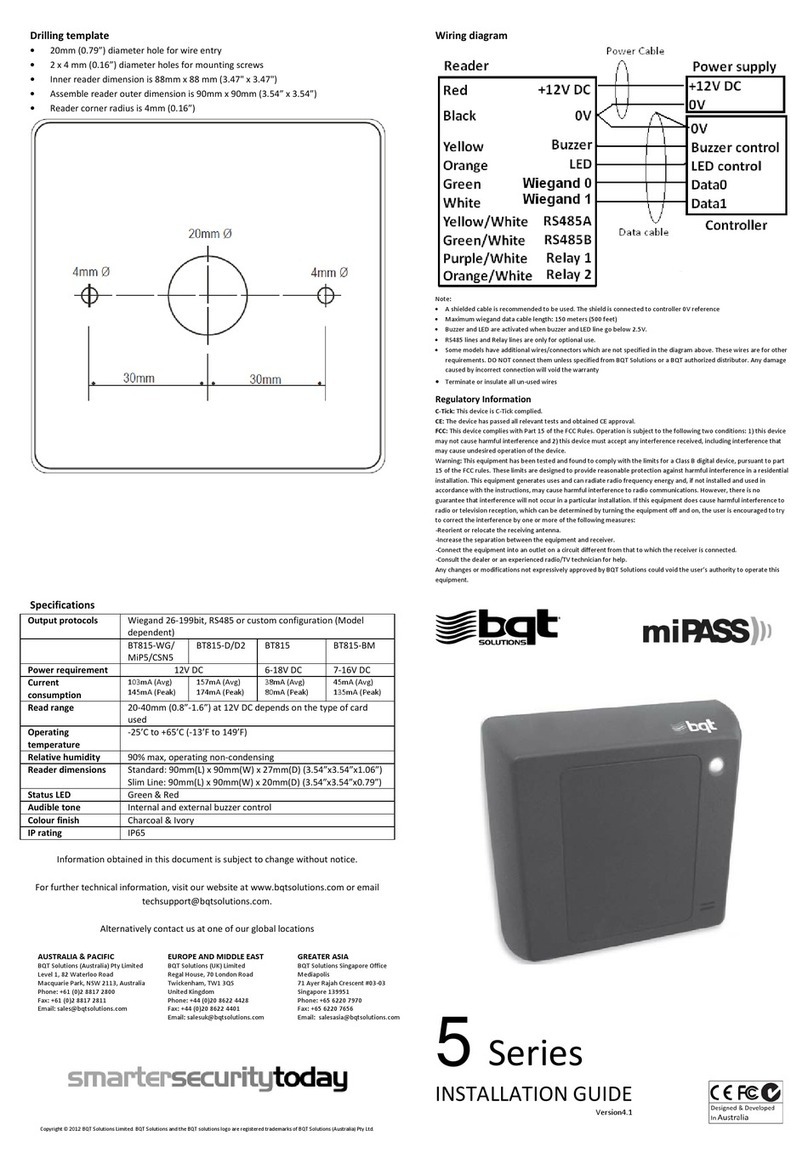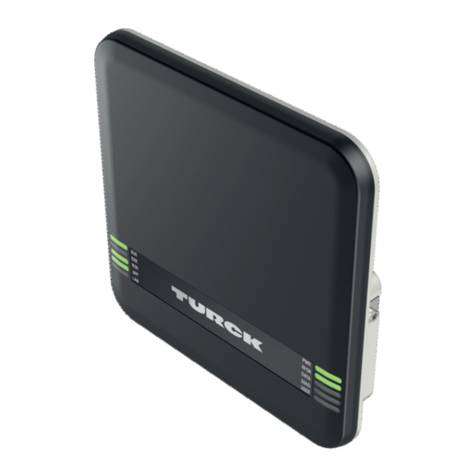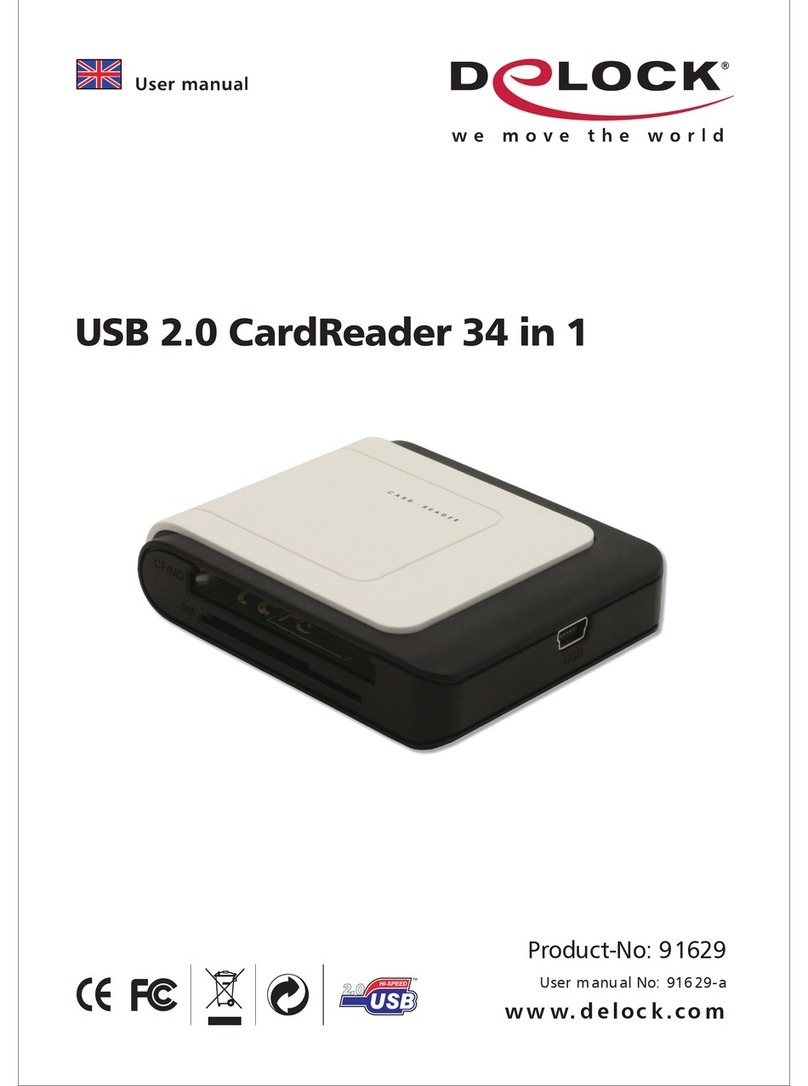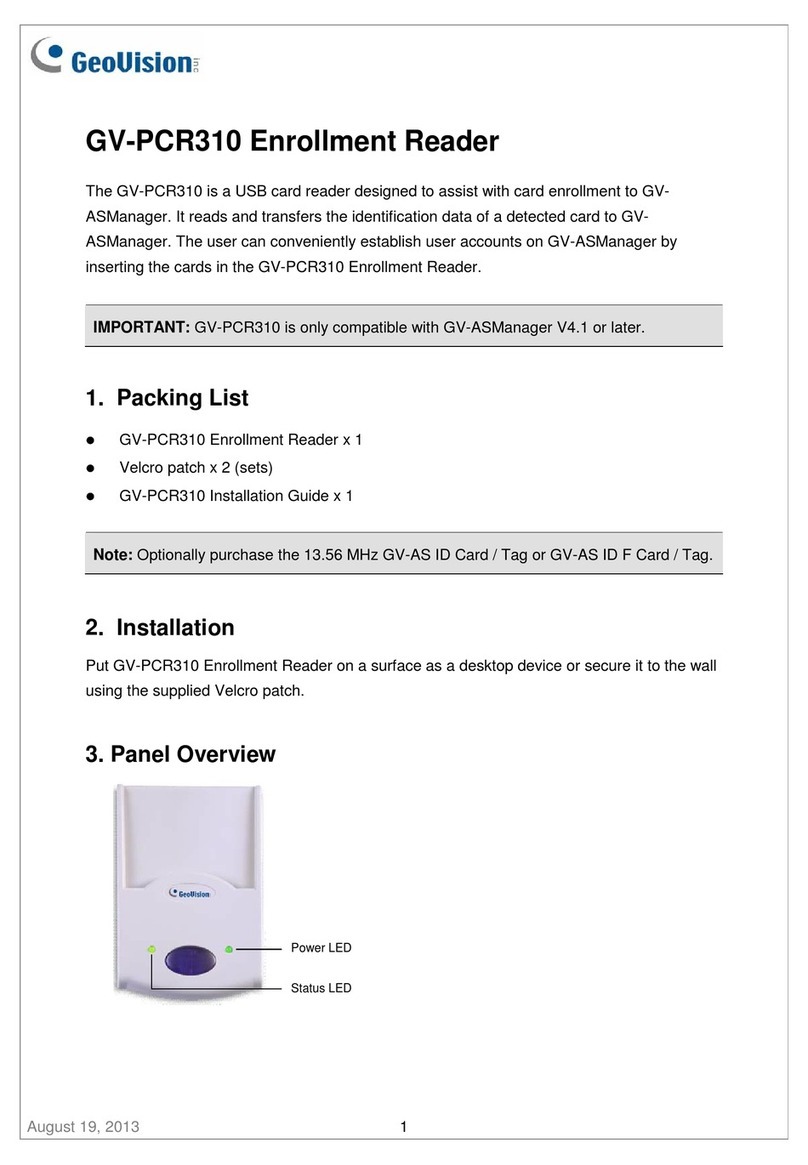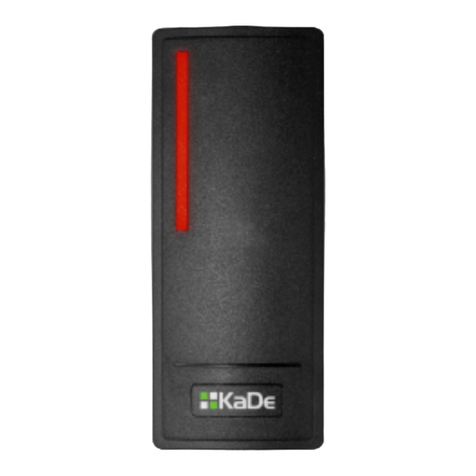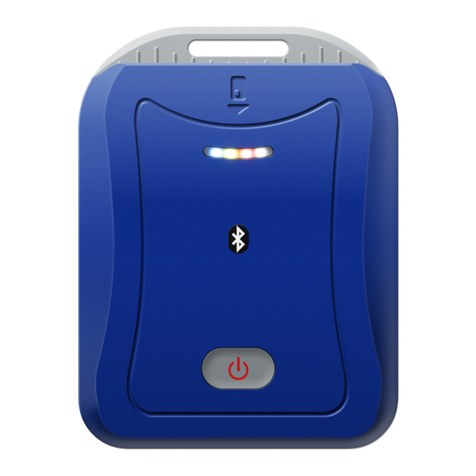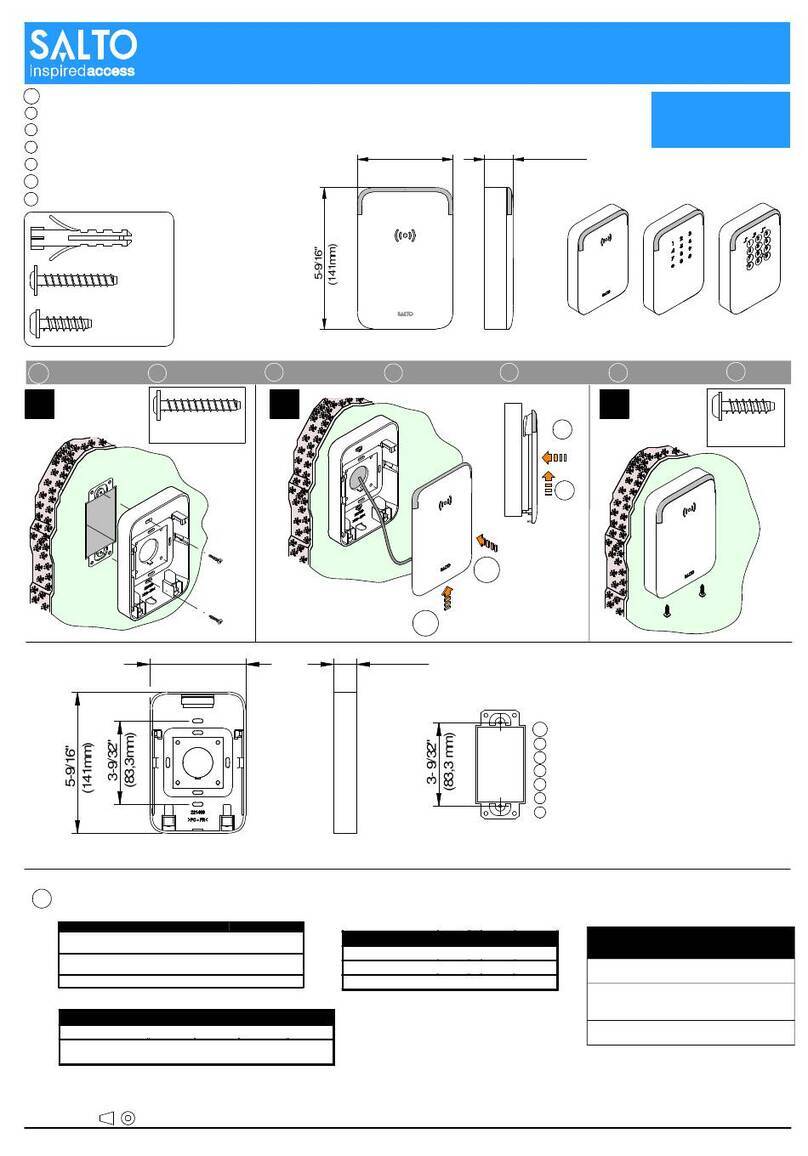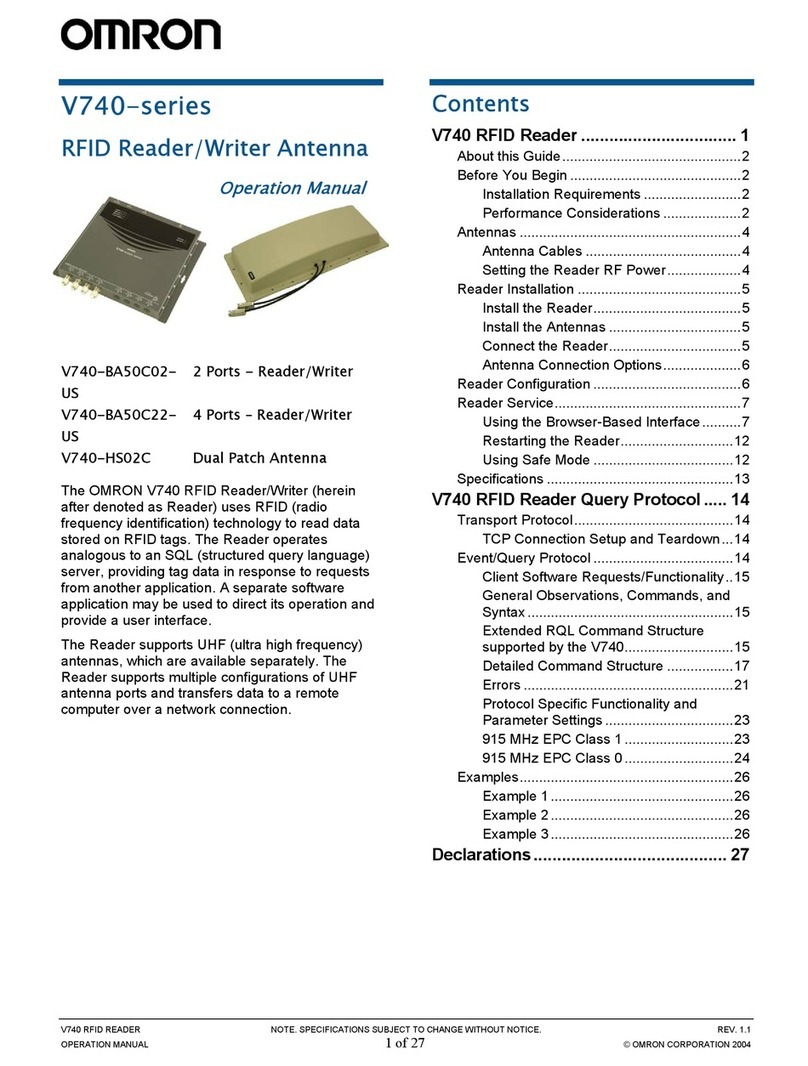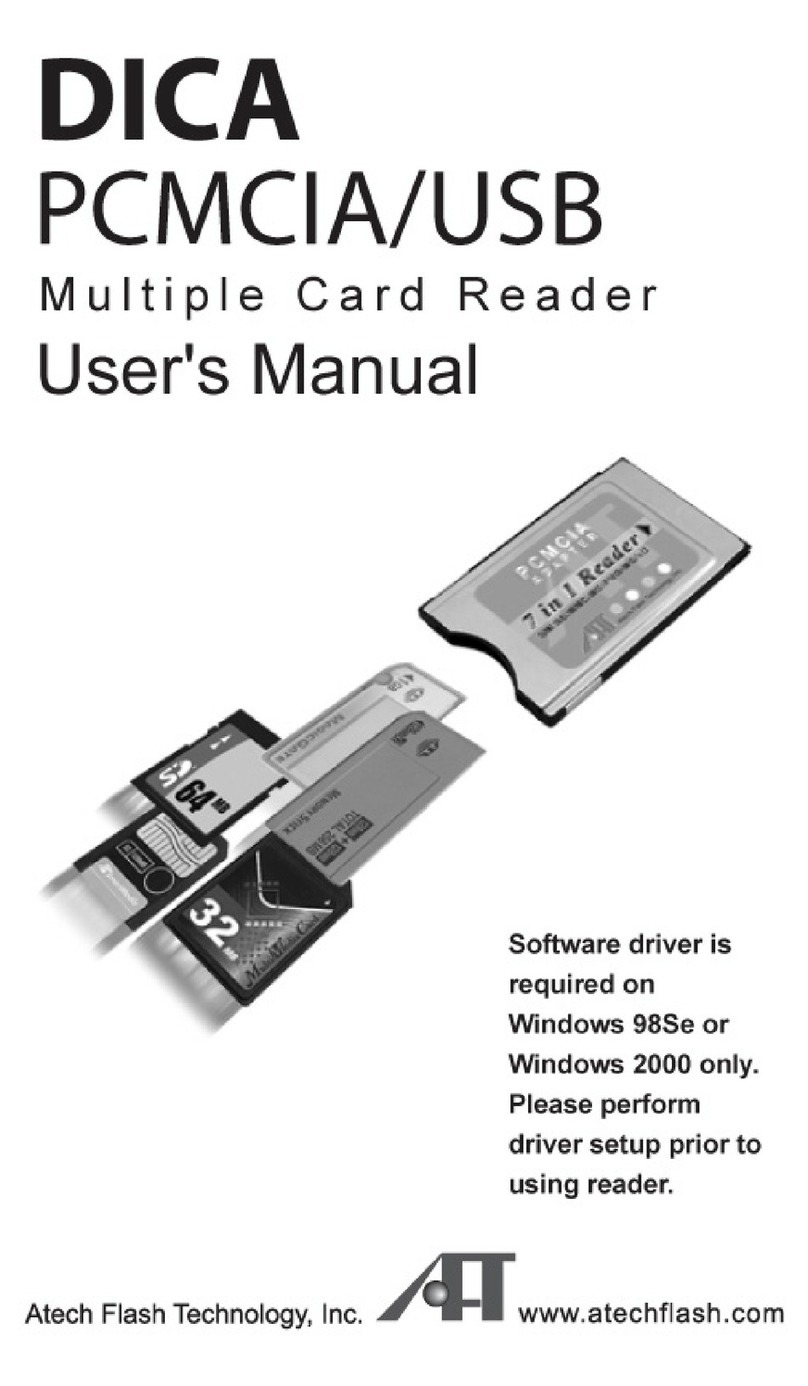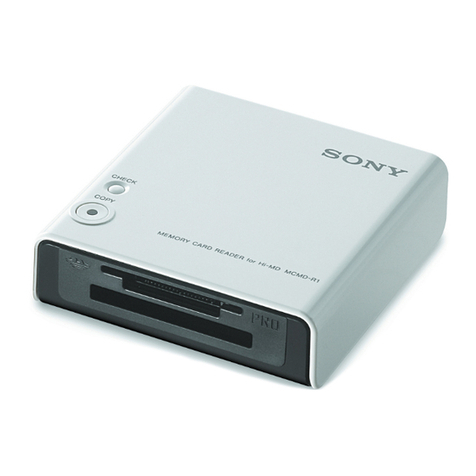Siko MSK4000 Operation manual

MSK4000+MB4000 Datum 10.11.2009 Art.Nr. 84522 Änd. Stand 326/09 1
DEUTSCH
Sensordarstellungen sind exemplarisch und gültig
für alle Bauformen, sofern nicht gesondert be-
schrieben.
1. Gewährleistungshinweise
Lesen Sie vor der Montage und der Inbetriebnahme
dieses Dokument sorgfältig durch. Beachten Sie zu
Ihrer eigenen Sicherheit und der Betriebssicherheit
alle Warnungen und Hinweise.
Ihr Produkt hat unser Werk in geprüftem und be-
triebsbereitem Zustand verlassen. Für den Betrieb
gelten die angegeben Spezifikationen und die
Angaben auf dem Typenschild als Bedingung.
Garantieansprüche gelten nur für Produkte der
Firma SIKO GmbH. Bei dem Einsatz in Verbindung
mit Fremdprodukten besteht für das Gesamtsystem
kein Garantieanspruch.
Reparaturen dürfen nur im Werk vorgenommen
werden. Für weitere Fragen steht Ihnen die Firma
SIKO GmbH gerne zur Verfügung.
2. Identifikation
Magnetband: Das Magnetband ist durch eine fort-
laufende Bedruckung identifizierbar:
MB Typ, Genauigkeitsklasse, Trägermaterial, Ref.
Punkt Ausführung, Chargennummer.
Wobei nur dann das Merkmal aufgedruckt wird,
wenn es bei dem betreffenden Bandtyp vorhanden
ist.
Magnetsensor: Das Typenschild zeigt den Ge-
rätetyp mit Variantennummer. Die Lieferpapiere
•
•
•
•
ordnen jeder Variantennummer eine detaillierte
Bestellbezeichnung zu.
z.B. MSK4000-0023
Varianten-Nr.
Geräte-Typ
3. Mechanische Montage
Die Montage darf nur gemäß der angegebenen IP-
Schutzart vorgenommen werden. Das System muss
ggfs. zusätzlich gegen schädliche Umwelteinflüs-
se, wie z.B. Spritzwasser, Lösungsmittel, Staub,
Schläge, Vibrationen, starke Temperaturschwan-
kungen geschützt werden.
3.1 Montage Magnetband
Die Montage muss plan zur Montagefläche bzw. der
zu messenden Strecke erfolgen. Welligkeiten ver-
schlechtern immer die Messgenauigkeit.
Aus technischen Gründen muss bei der Länge, ge-
genüber der Messstrecke, ein Zumaß von 237mm
berücksichtigt werden.
Achtung! Um optimale Verklebungen zu errei-
chen müssen alle antiadhäsiven Fremdsubstanzen
(Öl, Fett, Staub usw.) durch möglichst rückstands-
los verdunstende Reinigungsmittel entfernt wer-
den. Als Reinigungsmittel eignen sich u.a. Ketone
(Aceton) oder Alkohole, die u.a. von den Firmen
Loctite und 3M als Schnellreiniger angeboten wer-
den. Die Klebeflächen müssen trocken sein und es
ist mit höchstmöglichem Anpressdruck zu verkle-
ben. Die Verklebungstemperatur ist optimal zwi-
schen 20°C und 30°C in trockenen Räumen.
Tip! Bei Verklebung langer Bänder sollte die
Schutzfolie des Klebebandes über eine kurze Teil-
strecke abgezogen werden, um das Band zu fixie-
ren. Daraufhin erfolgt das Ausrichten des Bandes.
Nun kann über die restliche Länge die Schutzfolie
unter gleichzeitigem Andruck des Bandes seitlich
herausgezogen werden (als Hilfsmittel kann eine
Tapetenandrückwalze verwendet werden).
Montageschritte (Abb. 1)
Befestigungsfläche (1) sorgfältig reinigen.
Am Magnetband die Schutzfolie (2) des Klebe-
bandes (3) entfernen.
Magnetband (4) aufkleben.
Magnetbandoberfläche sorgfältig reinigen.
Am Abdeckband (5) die Schutzfolie (6) des Kle-
bebandes entfernen.
Abdeckband aufkleben (an beiden Enden leicht
überlappen lassen).
Die überlappenden Enden des Abdeckbandes gegen
Ablösen sichern.
•
•
•
•
•
•
•
Benutzerinformation
MSK4000+MB4000
Magnetsensor und Magnetband

2 MSK4000+MB4000 Datum 10.11.2009 Art.Nr. 84522 Änd. Stand 326/09
Abb. 2 Abb. 3
Abb. 4 Abb. 5
Abb. 6 Abb. 7
Abb. 8: Definition der Zählrichtung / Montage
Zählrichtung A vor B
Kabelabgang Verfahrrichtung
aktive Seite
Abstand Sensor/Magnetband 5-20mm
±3° ±3°
±10°
maximale Fluchtungsfehler
Zul. Abweichung
Mitte Band/Sensor:
±5mm
Abb. 1: Montage Magnetband
Achtung! Die Beeinflussung durch magnetische
Felder ist zu vermeiden. Insbesondere dürfen keine
Magnetfelder (z.B. Haftmagnete oder andere Dau-
ermagnete) in direkten Kontakt mit dem Magnet-
band geraten. In stromlosem Zustand werden Be-
wegungen oder Verstellungen des Magnetsensors
von der Folgeelektronik nicht erkannt und erfasst.
Montagebeispiele
Die einfache Montageart, durch angeschrägtes
Schutzband (Abb. 2), ist nur in sehr geschützter Um-
gebung zu empfehlen. Bei ungeschützter Umgebung
besteht Abschälgefahr. In solchen Fällen sind Monta-
gearten, wie in Abb. 3 und 4 gezeigt, geeigneter.
Den optimalen Schutz bietet die Montage in einer
Nut (Abb. 5), die so tief sein sollte, dass das Magnet-
band vollständig darin eingebettet werden kann.
Hinweis: Um das Magnetband zu sichern kann man
wie in Abb. 6 und Abb. 7 eine nicht magnetische
Befestigungslasche oder ein Abdeckblech verwen-
det werden. Der max. Abstand zwischen Magnet-
band und Sensor muss eingehalten werden.
3.2 Montage Magnetsensor
Der Magnetsensor kann durch Verwendung von 2
Schrauben M3 über die ø3,5mm Durchgangslöcher
befestigt werden. Es wird empfohlen die beilie-
genden Befestigungsschrauben und Federringe zu
verwenden (Anzugsmoment 0,25Nm).
Kabel sind so zu verlegen, dass keine Beschä-
digungsgefahr durch Zug oder andere Maschi-
nenteile besteht. Falls nötig, Schleppkette oder
Schutzschlauch verwenden und Zugentlastung
vorsehen.
Auf richtige Ausrichtung bezüglich der Zähl-
richtung achten (Abb. 8). Dies ist unerheblich
falls sich die Zählrichtung in der elektronischen
Auswertung umkehren lässt (wie z.B. bei den
Magnetbandanzeigen von SIKO).
Abstandmaße zwischen Sensor und Magnetband
sowie Winkeltoleranzen beachten, diese müssen
über die gesamte Messstrecke eingehalten werden
(Abb. 8)!
•
•
•
4. Elektrischer Anschluss
Verdrahtungsarbeiten dürfen nur spannungslos
erfolgen!
Vor dem Einschalten sind alle Leitungsanschlüsse
und Steckverbindungen zu überprüfen.
Hinweise zur Störsicherheit
Alle Anschlüsse sind gegen äußere Störeinflüsse
geschützt. Der Einsatzort ist aber so zu wählen,
dass induktive oder kapazitive Störungen nicht
auf den Sensor oder dessen Anschlussleitung
einwirken können! Durch geeignete Kabelführung
und Verdrahtung können Störeinflüsse (z.B.von
Schaltnetzteilen, Motoren, getakteten Reglern
oder Schützen) vermindert werden.
•
•

MSK4000+MB4000 Datum 10.11.2009 Art.Nr. 84522 Änd. Stand 326/09 3
so kurz wie
möglich
Schirm
Abb. 9: Montage Anschlussart E6
Schirm
Buchsenteil
Stiftteil
Ansichtseite =
Steckseite
Erforderliche Maßnahmen:
Nur geschirmtes Kabel verwenden. Den Kabel-
schirm beidseitig auflegen. Litzenquerschnitt der
Leitungen min. 0,14mm², max. 0,5mm².
Die Verdrahtung von Abschirmung und Masse (0V)
muss sternförmig und großflächig erfolgen. Der An-
schluss der Abschirmung an den Potentialausgleich
muss großflächig (niederimpedant) erfolgen.
Das System muss in möglichst großem Abstand von
Leitungen eingebaut werden, die mit Störungen
belastet sind; ggfs. sind zusätzliche Maßnahmen
wie Schirmbleche oder metallisierte Gehäuse
vorzusehen. Leitungsführungen parallel zu Ener-
gieleitungen vermeiden.
Schützspulen müssen mit Funkenlöschgliedern
beschaltet sein.
Spannungsversorgung
Die Spannungswerte sind abhängig von der Sen-
sorausführung und sind den Lieferpapieren sowie
dem Typenschild zu entnehmen.
z.B.: 24 VDC ±20%
5. Anschlussarten
Die Steckerbelegungen der verschiedenen An-
schlussarten werden nachfolgend beschrieben.
Anschlussart E1
Anschluss mit offenen Kabelenden.
Achtung! Verzinnte Litzen dürfen nicht in Verbin-
dung mit Schraubklemmverbindungen eingesetzt
werden.
Signal nicht
invertiert
invertiert invertiert mit
Referenzsignal
A rot rot rot
B orange orange orange
I - - - - - - blau
+UB braun braun braun
GND schwarz schwarz schwarz
A/ - - - gelb gelb
B/ - - - grün grün
I/ - - - - - - violett
Ummantelung entfernen.
Schirm auftrennen und verdrillen.
Litzen ca. 5mm abisolieren und verdrillen.
Aderendhülsen aufquetschen.
•
•
•
•
1.
2.
3.
4.
Anschlussart E6
Anschluss mit Kupplungsstecker und Kupplungsdo-
se. Steckermontage entsprechend Abb. 9.
Signal nicht
invertiert
invertiert invertiert mit
Referenzsignal
A PIN 3 PIN 1 PIN 1
B 4 2 2
I - - - - - - 3
+UB 2 4 4
GND 1 5 5
A/ - - - 6 6
B/ - - - 7 7
I/ - - - - - - 8
- - - 5-7 3
Pos. 6 ... 10 über Kabelmantel schieben.
Kabel abisolieren.
Schirm umlegen.
Pos. 5 auf Litzen schieben.
Litzen an Pos. 3 löten (entspr. Anschlussplan).
Abstandhülse Pos. 4 aufweiten und über Litzen
stülpen, zusammendrücken und auf Pos. 3 ste-
cken. Schlitz und Nut (Pos. 3 und 4) müssen
deckungsgleich sein.
Pos. 6 an Pos. 5 drücken, überstehenden Schirm
abschneiden.
Pos. 2 und 7 aufschieben und mittels Montage-
werkzeug Pos. 11 verschrauben.
1.
2.
3.
4.
5.
6.
7.
8.

4 MSK4000+MB4000 Datum 10.11.2009 Art.Nr. 84522 Änd. Stand 326/09
Ansichtseite = Steckseite
Pos. 8 in Pos. 9 stecken, beides in Pos. 7
schieben.
Pos. 10 mit Pos. 7 verschrauben.
Pos. 1 in Pos. 2 schieben.
Anschlussart E8
Anschluss mit 9-pol. D-SUB Stiftkontakt und
Buchsenkontakt.
9.
10.
11.
Signal nicht
invertiert
invertiert invertiert mit
Referenzsignal
A PIN 3 PIN 1 PIN 1
B 4 2 2
I - - - - - - 3
+UB 2 4 4
GND 1 5 5
A/ - - - 6 6
B/ - - - 7 7
I/ - - - - - - 8
- - - 5-7 3, 8, 9 9
6. Wartung
Die Oberfläche des Magnetbandes ist bei starker
Verschmutzung durch Staub, Späne, Feuchtigkeit,
usw., von Zeit zu Zeit mit einem weichen Lappen
zu reinigen.
7. Fehlerbehandlung
Typische Fehler, die bei Anbau und Betrieb auf-
treten:
Das Magnetband wurde falsch montiert /aktive
Seite nach unten (siehe Kap. 3.1).
Zum Schutz des Magnetbandes wurde nicht das
mitgelieferte Abdeckband verwendet. Das Abdeck-
band muss nichtmagnetisierbar sein.
Der Sensor ist nicht, oder nicht korrekt ange-
schlossen (Pinbelegung Kap. 5).
Die Abstandstoleranz zwischen Sensor und
Magnetband wurde nicht über die gesamte
Messstrecke eingehalten, der Sensor streift auf
dem Magnetband (Abb. 8).
Kabelunterbrechung / Abtrennung durch scharfe
Kanten / Quetschung.
Der Sensor ist mit der aktiven Seite vom Band
abgewandt montiert (Abb. 8). Die aktive Seite
ist zusätzlich mit dem Aufkleber "Bandseite"
•
•
•
•
•
•
gekennzeichnet.
Der Sensor wurde nicht entsprechend Abb. 8
ausgerichtet.
•

MSK4000+MB4000 Datum 10.11.2009 Art.Nr. 84522 Änd. Stand 326/09 5
ENGLISH
Exemplary sensor illustrations are valid for all sen-
sor types unless described separately.
1. Warranty information
In order to carry out installation correctly, we
strongly recommend this document is read very
carefully. This will ensure your own safety and
the operating reliability of the device.
Your device has been quality controlled, tested
and is ready for use. Please observe all warnings
and information which are marked either directly
on the device or specified in this document.
Warranty can only be claimed for components
supplied by SIKO GmbH. If the units are used
together with other products, the warranty for
the complete system is invalid.
Repairs should be carried out only at our works.
If any information is missing or unclear, please
contact the SIKO sales staff.
2. Identification
Magnetic strip: identification by printing on the
strip:
MB type, accuracy class, carrier material, design
ref. point, batch number.
The feature is only printed on the strip if it is
actually present with the respective strip type.
Magnetic sensor: The particular type of unit and
type number can be seen from the identification
plate. Type number and the corresponding version
•
•
•
•
are indicated in the delivery documentation.
e.g. MSK4000-0023
version number
type of unit
3. Installation
For mounting, the degree of protection specified
must be observed. If necessary, protect the unit
against environmental influences such as sprayed
water, dust, knocks, extreme temperatures, sol-
vents.
3.1 Mounting the magnetic strip
The mounting surface / measuring track must be
flat. Buckles or bumps will lead to measuring in-
accuracies.
For technical reasons the strip should be approx.
237mm longer than the actual measuring distance.
Attention! To guarantee optimal adhesion oil,
grease dust etc. must be removed by using clean-
sing agents which evaporate without leaving re-
sidues. Suitable cleansing agents are eg. ketones
(acetone) or alcohols; Messrs. Loctite and 3M can
both supply such cleansing liquid. Make sure that
the surface to be glued is dry and apply the strip
with maximum pressure. Glueing should preferably
be undertaken at temperatures between 20°C to
30°C and in dry atmosphere.
Advice! When applying long pieces of magnetic
strip do not immediately remove the complete
protective foil, but rather peel back a short part
from the end sufficient to fix the strip. Now align
the strip. As the protective strip is then peeled
back and out press the tape firmly onto the moun-
ting surface. A wall paper roller wheel could be
used to assist in applying pressure onto the mag-
netic strip when fixing it in position.
Mounting steps (see fig. 1)
Clean mounting surface (1) carefully.
Remove protective foil (2) from the adhesive
side of the magnetic strip (3).
Stick down the magnetic strip (4).
Clean surface of magnetic strip carefully.
Remove protective foil (6) from adhesive tape on
the cover strip (5).
Fix cover strip (both ends should slightly over-
lap).
Also fix cover strip's ends to avoid unintenti-
onalpeeling.
•
•
•
•
•
•
•
User Information
MSK4000+MB4000
Magnetic sensor and magnetic strip

6 MSK4000+MB4000 Datum 10.11.2009 Art.Nr. 84522 Änd. Stand 326/09
Fig. 2 Fig. 3
Fig. 4 Fig. 5
Fig.6 Fig.7
Fig. 8: Definition of counting direction / mounting
Counting direction A before B
cable outlet travel direction
active side
Gap sensor/magnetic strip 5-20mm
±3° ±3°
±10°
maximum alignment errors
Admissable deviatoion
middle of tape/sensor:
±5mm
Fig. 1: Mounting of the magnetic strip
Attention! Do not expose the system to magne-
tic fields. Any direct contact of the magnetic strip
with magnetic fields (e.g. adhesive magnets or
other permanent magnets) is to be avoided. Sen-
sor movements during power loss are not captured
by the follower electronics.
Mounting examples
Mounting with chamfered ends (fig. 2) is not re-
commended unless the strip is installed in a safe
and protected place without environmental influ-
ences. In less protected mounting places the strip
may peel. There we recommend mounting accord.
to fig. 3 and 4.
Mounting in a groove (fig. 5) best protects the
magnetic strip. The groove should be deep enough
to totally embed the magnetic strip.
Indication: A non-magnetic fastening lug or cover
plate can be used for securing the magnetic tape
(see fig. 6 + 7). The max. admissable gap between
tape and sensor must not be exceeded.
4. Electrical connection
Wiring must only be carried out with power off!
Check all lines and connections before switching
on the equipment.
Interference and distortion
All connections are protected against the effects
of interference. The location should be selected
to ensure that no capacitive or inductive inter-
ferences can affect the sensor or the connec-
tion lines! Interference can be caused by motors,
switch gear, cyclic controls and contactors. Sui-
table wiring layout and choice of cable can mini-
mise the effects of interference.
Necessary measures:
Only screened cable should be used. Wire cross sec-
tion is to be at least 0,14mm², max. 0,5mm².
Wiring to the screen and ground (0V) must
be secured to a good point. Ensure that the
•
•
•
•
3.2. Mounting the sensor
Use the two M3 screws to fix the magnetic sensor
via the ø3,5mm through holes. We recommend to
use the enclosed fixing screws and washer springs
(fastening torque 0,25Nm).
Cable layout should avoid damages due to cable
strain or other machine parts. If necessary use
a drag chain or protective hose and provide for
strain relief.
Sensor must be aligned correctly with respect
to the counting direction (see fig. 8). This can
be ignored if counting direction can be changed
via the follower electronics (e.g. by magnetic
display units from SIKO).
When mounting the magnetic sensor, ensure that
the gap between strip & sensor and the max.
admissable deviation are maintained over the
total measuring length (see fig. 8)!
•
•
•

MSK4000+MB4000 Datum 10.11.2009 Art.Nr. 84522 Änd. Stand 326/09 7
as short as
possible
screening
Fig. 9: Mounting connection type E6
screening
socket
pin
viewing side =
plug-in side
connection of the screen and earth is made to
a large surface area with a sound connection to
minimise impedance.
The sensor should be positioned well away from
cables with interference; if necessary a protective
screen or metal housing must be provided. The
running of wiring parallel to the mains supply
should be avoided.
Contactor coils must be linked with spark sup-
pression.
Supply voltage
The voltages depend on the sensor designs; they
are to be taken from the delivery documentation
and the identification plate.
e.g.: 24 VDC ±20%
5. Connection methods
Below description of the pin connection for the
different connection methods.
Connection type E1
Flying leads.
Attention! Tinned strands must not used in com-
bination with screw/clamp connections.
Signal not
inverted
inverted inverted with
reference signal
A red red red
B orange orange orange
I - - - - - - blau
+UB brown brown brown
GND black black black
A/ - - - yellow yellow
B/ - - - green green
I/ - - - - - - violet
Remove cable coating.
Open screening and twist it.
Strip stranded wires to a length of 5mm and
twist them.
Pinch stranded wires
•
•
1.
2.
3.
4.
Signal not
inverted
inverted inverted with
reference signal
A PIN 3 PIN 1 PIN 1
B 4 2 2
I - - - - - - 3
+UB 2 4 4
GND 1 5 5
A/ - - - 6 6
B/ - - - 7 7
I/ - - - - - - 8
- - - 5-7 3
Connection type E6
Connection with mit coupler plug and coupler so-
cket. Plug mounting according to fig. 9.
Slip parts 6 to 10 over outer cable.
Strip cable.
Turn down screening.
Push part 5 onto ferrules.
Solder wires to part 3 (according connection
diagram).
Open spacer (part 4) and put it over ferrules,
squeeze and push it onto part 3. Slot and keyway
of parts 3 and 4 must align.
Press parts 6 and 5 together; cut prodruding
screening.
Push parts 2 and 7 together and screw part 11
using appropriate tool.
Push part 8 into part 9 and slide both parts
into part 7.
Screw parts 10 and 7 together.
Push part 1 into part 2.
1.
2.
3.
4.
5.
6.
7.
8.
9.
10.
11.

8 MSK4000+MB4000 Datum 10.11.2009 Art.Nr. 84522 Änd. Stand 326/09
viewing side = plug-in side
Connection type E8
Connection with 9 pole D-SUB plug pin and socket
contact.
SIKO GmbH
Werk / Factory:
Weihermattenweg 2
79256 Buchenbach-Unteribental
Postanschrift / Postal address:
Postfach 1106
79195 Kirchzarten
Telefon/Phone +49 7661 394-0
Telefax/Fax +49 7661 394-388
E-Mail info@siko.de
Internet www.siko.de
Service [email protected]e
Signal not
inverted
inverted inverted with
reference signal
E6 E8 E6 E8 E6 E8
A PIN 3 PIN 3 PIN 1 PIN 1 PIN 1 PIN 1
B 4 4 2 2 2 2
I - - - - - - - - - - - - 3 3
+UB 2 2 4 4 4 4
GND 1 1 5 5 5 5
A/ - - - - - - 6 6 6 6
B/ - - - - - - 7 7 7 7
I/ - - - - - - - - - - - - 8 8
- - - 5-7 5-9 3 3, 8, 9 9
7. Maintenance
We recommend cleaning the magnetic strip's surface
from time to time with a soft rag. This avoids dirt
(dust, chips, humidity ...) sticking to the strip.
8. Trouble shooting
Below are some typical errors which may occur du-
ring installation and operation:
Magnetic strip incorrectly mounted (active sur-
face must be mounted towards the sensor) (see
chapter 3.1).
Use of foreign protective strip. Must always be
non-magnetic.
Sensor not or incorrectly connected (pin connec-
tion, see chapter 5).
Tolerance for the gap between magnetic sensor and
magnetic strip not observed over the total travel
distance. Sensor touches strip (see fig. 8).
Cable squeezed / interrupted / cut by sharp
edges.
Sensor's active side not mounted towards the
magnetic strip (see fig. 8). The active side is
marked by the label "scale side".
Sensor has not been aligned according to fig.
8.
•
•
•
•
•
•
•
This manual suits for next models
1
Table of contents
Languages:
Popular Card Reader manuals by other brands
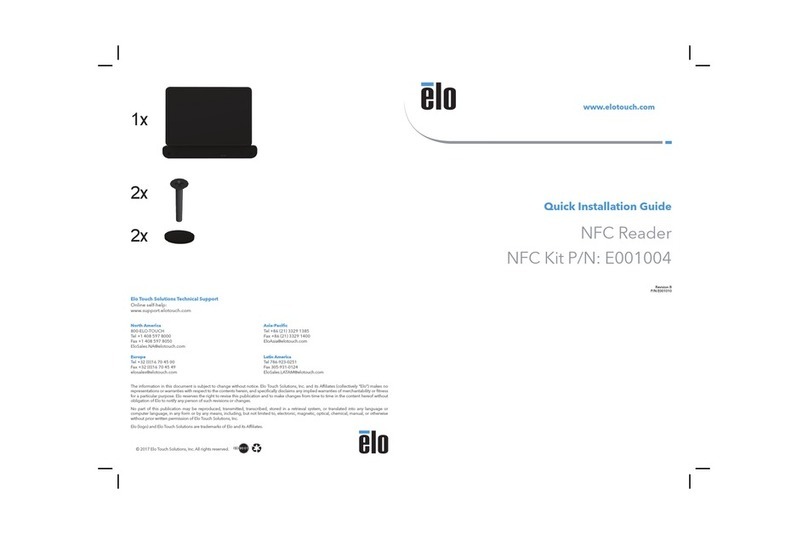
Elo TouchSystems
Elo TouchSystems E001004 Quick installation guide
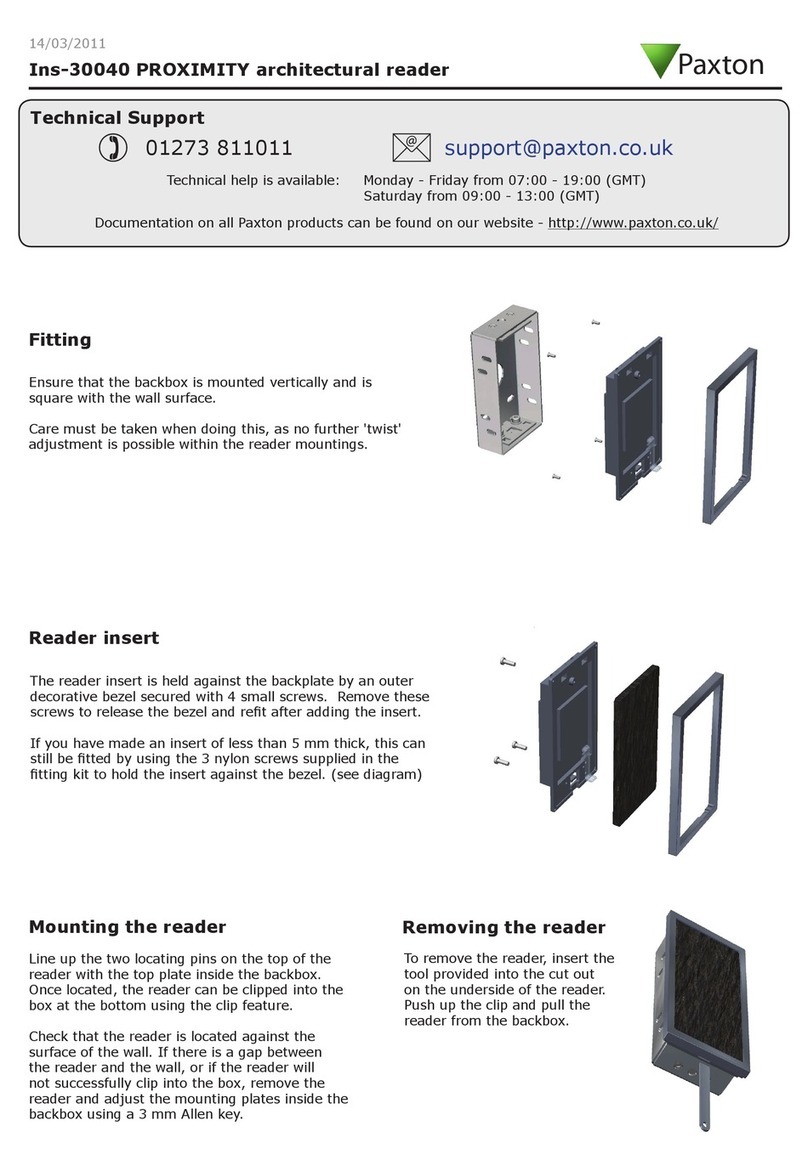
Paxton
Paxton PROXIMITY Ins-30040 quick start guide
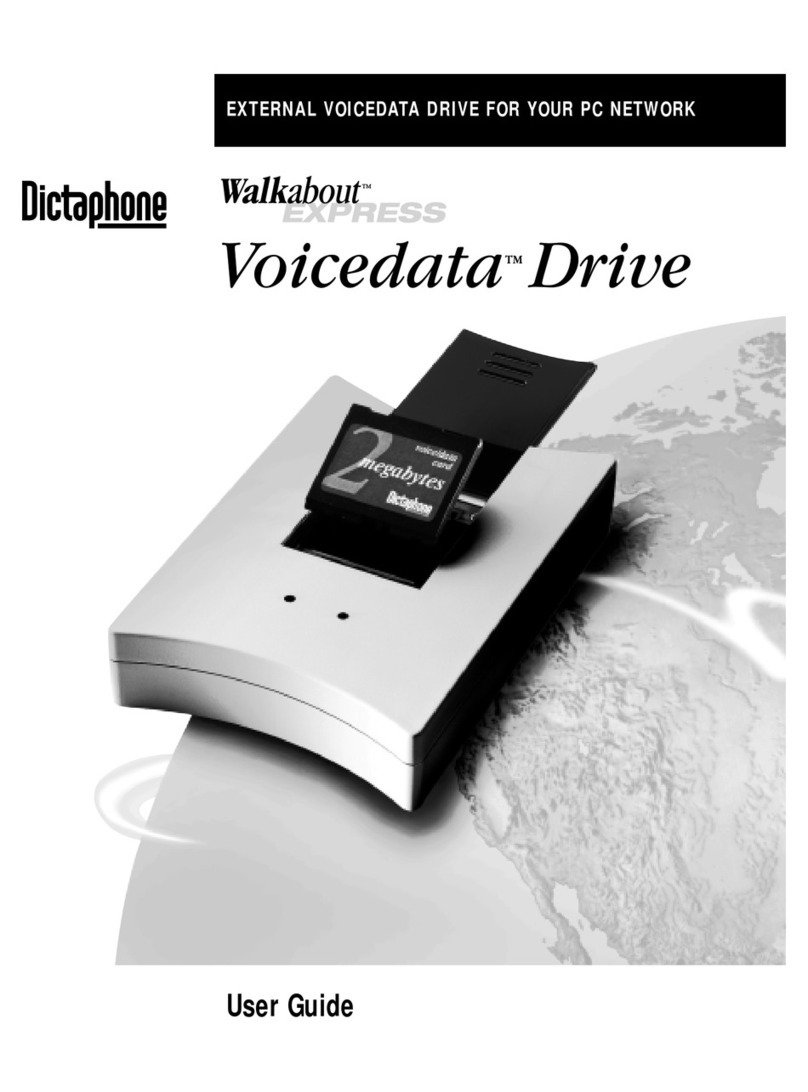
Dictaphone
Dictaphone Walkabout EXPRESS Voicedata Drive user guide
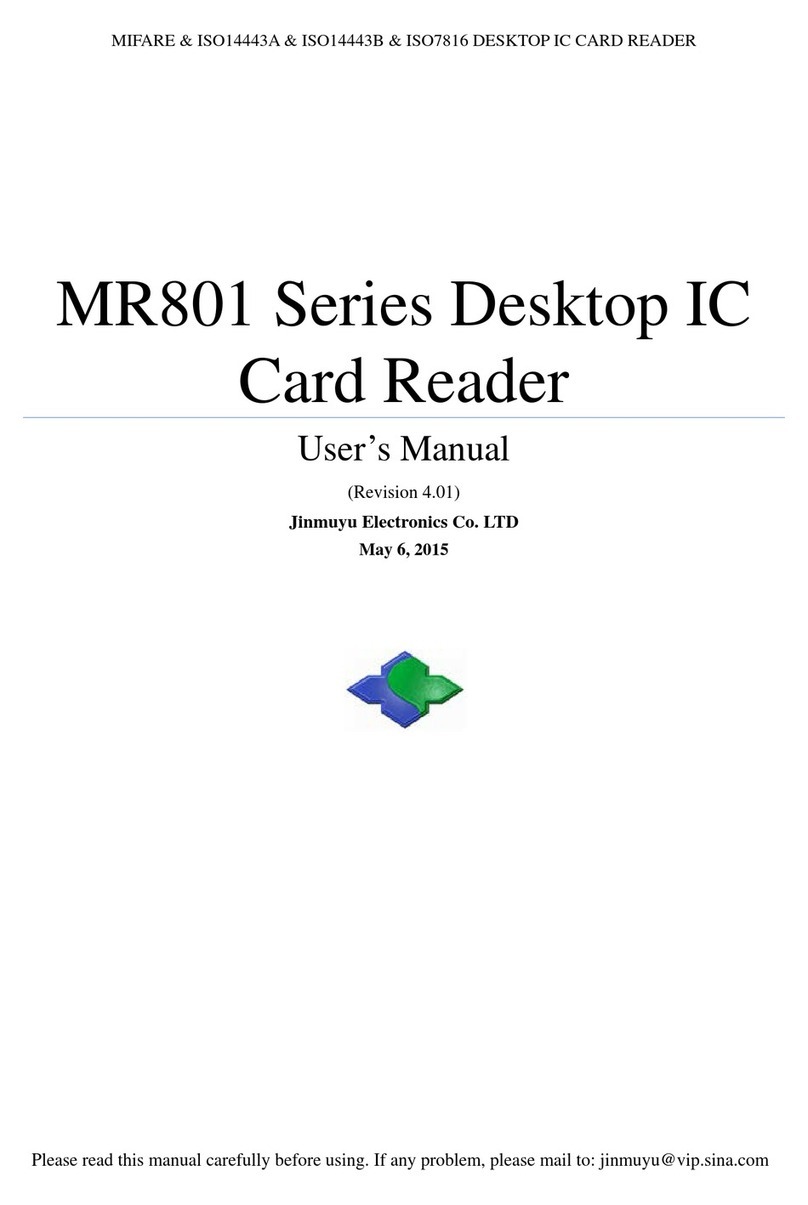
Jinmuyu Electronics
Jinmuyu Electronics MR801 Series user manual
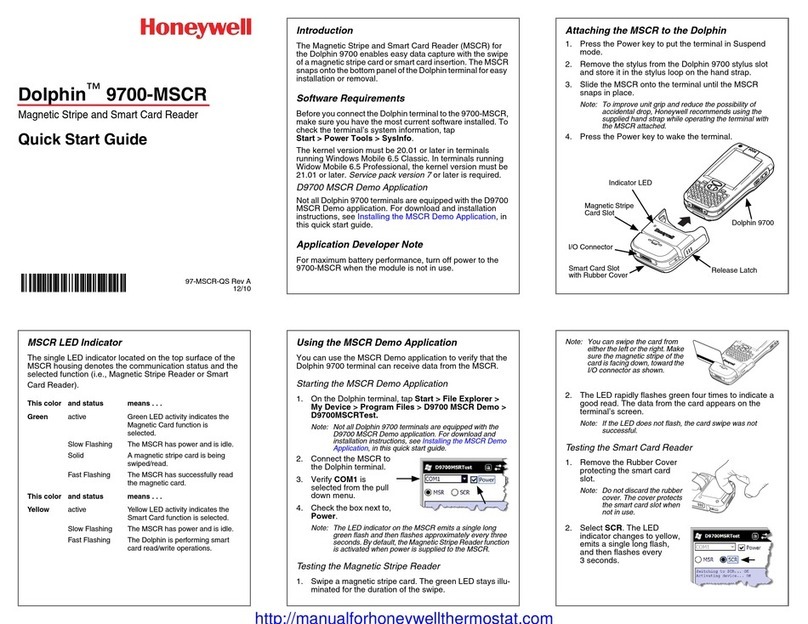
Honeywell
Honeywell Dolphin 9700-MSCR quick start guide

Renkforce
Renkforce 1170560 operating instructions
